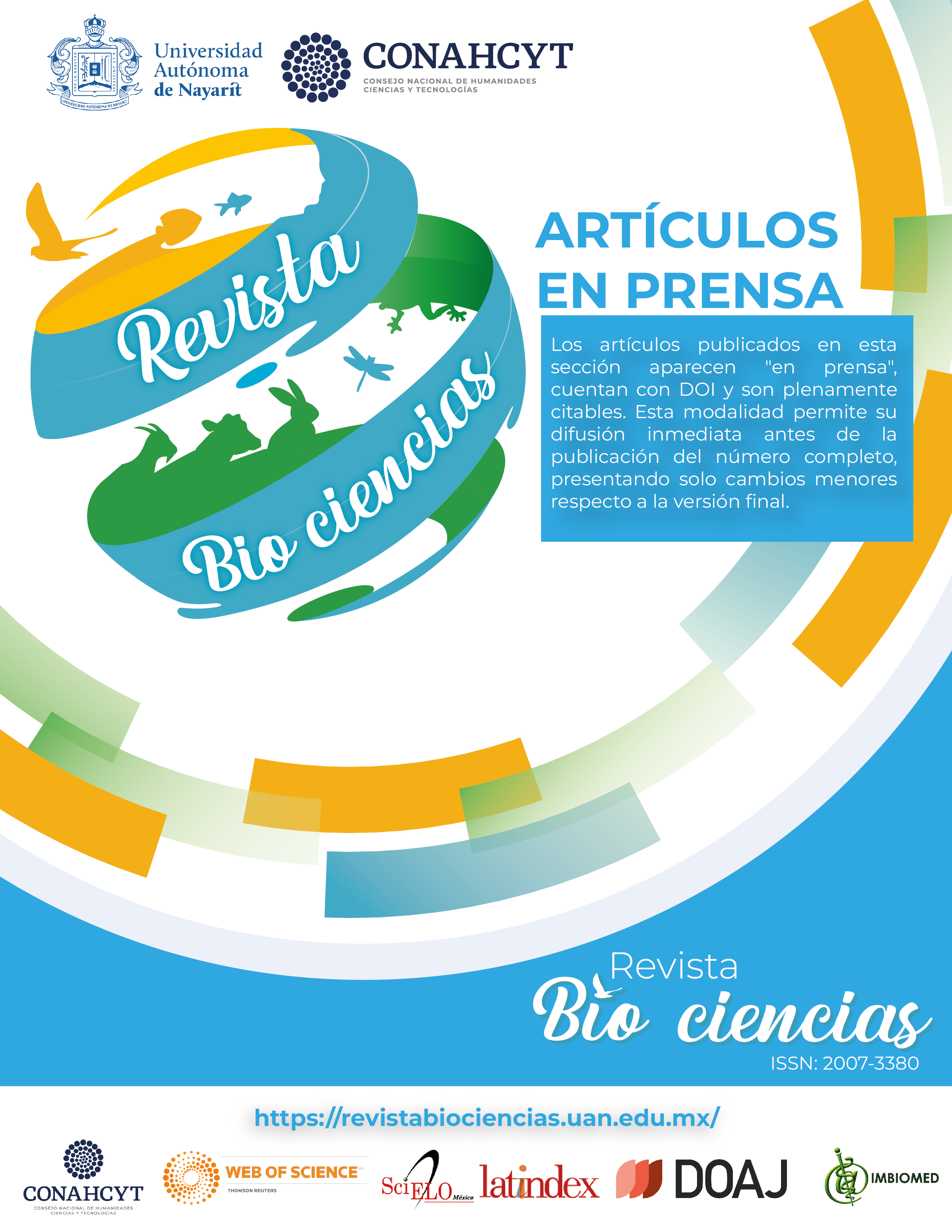Abstract
Zinc oxide (ZnO) is a nanoparticle that stands out in technological applications, such as gas sectors, ultraviolet and visible lasers, solar cells, photocatalytic cells, in photocatalytic catalysts, where its synthesis plays an important role in each application. The introduction of biological components in the synthesis of nanoparticles, such as plant extracts, is of great interest, as it is an easy-to-obtain product that does not pollute the environment. Tithonia diversifolia is a forage plant that has physiological adaptations to cope with hostile environments, where its flower is currently not used, so this work focuses on the production of zinc oxide by green chemistry using extracts from the buttercup flower (Tithonia diversifolia) as a reducing agent and its characterization by X-ray techniques, diffuse reflectance and scanning electron microscopy. The results showed that the extract of the Button Flower (Tithonia diversifolia) produces wurzuite-type zinc oxide nanoparticles of 100 nm with a ratio of 30:55 (Zn:O), due to the presence of impurities (Magnesium, Calcium and Potassium), present in the extract, so its use could be directed to sectors such as health and agri-food.
References
Abdolhossien, M., Nafiseh, M., Omolbanin, E., Mehrdad K., & Mina S. (2019). Zinc oxide nanoparticles: Biosynthesis, characterization, antifungal and cytotoxic activity,Materials Science and Engineering, 104, 109981. https://doi.org/10.1016/j.msec.2019.109981.
Abdul, H., Sivaraj, R., & Venckatesh, R. (2014). Green synthesis and characterization of zinc oxide nanoparticles from Ocimum basilicum L. var. purpurascens Benth. Lamiaceae leaf extract. Materials Letters, 131, 16-18. https://doi.org/10.1016/j.matlet.2014.05.033
Borrás-Enríquez, A. J., Reyes-Ventura, E., Villanueva-Rodríguez, S. J., & Moreno-Vilet, L. (2021). Effect of Ultrasound-Assisted Extraction Parameters on Total Polyphenols and Its Antioxidant Activity from Mango Residues (Mangifera indica L. var. Manililla). Separations, 8(7), 94. https://doi.org/10.3390/separations8070094
Debanath, M.K. & Karmaka S. (2013). Study of blueshift of optical band gap in zinc oxide (ZnO) nanoparticles prepared by low-temperature wet chemical method. Materials Letters, 111, 116-119. https://doi.org/10.1016/j.matlet.2013.08.069
Galindo, J., González, N., Scull, I., Marrero, Y., Moreira, O., & Ruiz, T.E. (2017). Tithonia diversifolia (Hemsl.) A. Gray and its effect on the rumen population and microbial ecology. In: Mulberry, moringa, and tithonia in animal feeds and others: Results in Latin America and its Caribbean. San José de las Lajas, Cuba: FAO, ICA, EDICA. pp. 251-256. https://www.redalyc.org/journal/2691/269158220006/269158220006.pdf
Gardea-Torresdey, J. L., Parsons, J. G., Gómez, E., Peralta-Videa, J., Troiani, H. E., Santiago, P., & Yacaman, M. J. (2002). Formation and growth of Au nanoparticles inside live alfalfa plants. Nano letters, 2, 397-401. https://pubs.acs.org/doi/10.1021/nl015673%2B
Gendo, K. M., Feyisa Bogale, R., & Kenasa, G. (2024). Green synthesis, characterization, and evaluation of photocatalytic and antibacterial activities of Co3O4–ZnO nanocomposites using Calpurnia aurea leaf extract. ACS omega, 9(26), 28354-28371. https://doi.org/10.1021/acsomega.4c01595
Jadoun, S., Arif, R., Jangid, N. K., & Meena, R. K. (2021). Green synthesis of nanoparticles using plant extracts: A review. Environmental Chemistry Letters, 19(1), 355-374. https://doi.org/10.1007/s10311-020-01074-x
Lakshmeesha, T. R., Sateesh, M. K., Prasad, B. D., Sharma, S. C., Kavyashree, D., Chandrasekhar, M., & Nagabhushana, H. (2014). Reactivity of crystalline ZnO superstructures against fungi and bacterial pathogens: Synthesized using Nerium oleander leaf extract. Crystal growth & design, 14(8), 4068-4079. https://doi.org/10.1021/cg500699z
Mabou-Tagne, A., Marino F. & Cosentino, M. (2018). Tithonia diversifolia (Hemsl.) A. Gray as a medicinal plant: a comprehensive review of its ethnopharmacology, phytochemistry, pharmacotoxicology and clinical relevance, Journal of Ethnopharmacology, 220, 94-116. https://doi.org/10.1016/j.jep.2018.03.025
Marin, O., Tirado, M., Budini, N., Mosquera, E., Figueroa C., & Comedi, D. (2016). Photoluminescence from c-axis oriented ZnO films synthesized by sol-gel with diethanolamine as chelating agent, Materials Science in Semiconductor Processing, 56, 59-65. https://doi.org/10.1016/j.mssp.2016.07.007
Matinise, N., Fuku, X. G., Kaviyarasu, K., Mayedwa, N., & Maaza, M. (2017). ZnO nanoparticles via Moringa oleifera green synthesis: physical properties and mechanism of formation. Applied Surface Science, 406, 339-347. https://doi.org/10.1016/j.apsusc.2017.01.219
Morales-Díaz, A. B., Juárez-Maldonado, A., Morelos-Moreno, Á., González-Morales, S., & Benavides-Mendoza, A. (2016). Biofabricación de nanopartículas de metales usando células vegetales o extractos de plantas. Revista mexicana de Ciencias Agrícolas, 7, 1211-1224. https://doi.org/10.29312/remexca.v7i5.247
Naiel, B., Fawzy, M., Halmy, M.W.A., & AU-Mahmoud, A.E.D. (2022). Green synthesis of zinc oxide nanoparticles using Sea Lavender (Limonium pruinosum L. Chaz.) extract: characterization, evaluation of anti-skin cancer, antimicrobial and antioxidant potentials. Science Reports 12, 20370. http://doi.org.org/10.1038/s41598-022-24805-2
Nandhini, J., Karthikeyan, E., & Rajeshkumar S. (2024). Green synthesis of zinc oxide nanoparticles: Eco-friendly advancements for biomedical marvels", Resources Chemicals and Materials, 3(4), 294-316. https://doi.org/10.1016/j.recm.2024.05.001
Obeizi, Z., Benbouzid, H., Ouchenane, S., Yılmaz, D., Culha, M., & Bououdina, M. (2020). Biosynthesis of Zinc oxide nanoparticles from essential oil of Eucalyptus globulus with antimicrobial and anti-biofilm activities. Materials Today Communications, 25, 101553. https://doi.org/10.1016/j.mtcomm.2020.101553
Ramesh, M., Anbuvannan M., & Viruthagiri G., (2015). Green synthesis of ZnO nanoparticles using Solanum nigrum leaf extract and their antibacterial activity. Spectrochimica. Acta Part A: Molecular and Biomolecular Spectroscopy, 136, 864-870. https://doi.org/10.1016/j.saa.2014.09.105
Rao, K. K., & Rao, M. C. (2017). Optical and luminescence properties of ni2+doped PVA capped CDTE nanoparticles. Rasayan Journal Chemistry, 10(3), 904-909. https://rasayanjournal.co.in/admin/php/upload/228_pdf.pdf
Rodríguez, M., Sifontes, A. B., Méndez, F. J., Díaz, Y., Canizales, E., & Brito, J. L. (2013). Template synthesis and characterization of mesoporous γ-Al2O3 hollow nanorods using Stevia rebaudiana leaf aqueous extract. Ceramics International, 39, 4499-4506. https://doi.org/10.1016/j.ceramint.2012.11.044
Salinas-Estevané, J. P., & Sánchez-Cervantes, E. M. (2012). La química verde en la síntesis de nanoestructuras. Ingenierías, 15(54), 7-16. http://eprints.uanl.mx/id/eprint/10484
Senthilkumar, S. R., & Sivakumar, T. (2014). Green tea (Camellia sinensis) mediated synthesis of zinc oxide (ZnO) nanoparticles and studies on their antimicrobial activities. International Journal of Pharmacy and Pharmaceutical Sciences, 6(6), 461-465. https://innovareacademics.in/journal/ijpps/Vol6Issue6/9715.pdf
Singha, S. S., Mondal, S., Bhattacharya, T. S., Das, L., Sen, K., Satpati, B., Kaustuv, Das & Singha, A. (2018). Au nanoparticles functionalized 3D-MoS2 nanoflower: An efficient SERS matrix for biomolecule sensing. Biosensors and Bioelectronics, 119, 10-17. https://doi.org// 10.1016/j.bios.2018.07.061
Zagal-Padilla, C.K. & Gamboa, S.A. (2018).Optoelectronic characterization of ZnO obtained by green synthesis of Zn-salt precursor in parsley extract, Journal of Alloys and Compounds, 767, 932-937. https://doi.org/10.1016/j.jallcom.2018.07.191.

Revista Bio Ciencias by Universidad Autónoma de Nayarit under Creative Commons Attribution-NonCommercial 3.0 Unported License.
Based on work of http://biociencias.uan.edu.mx/.
Further permits not covered by this licence can be found at http://editorial.uan.edu.mx/index.php/BIOCIENCIAS.






